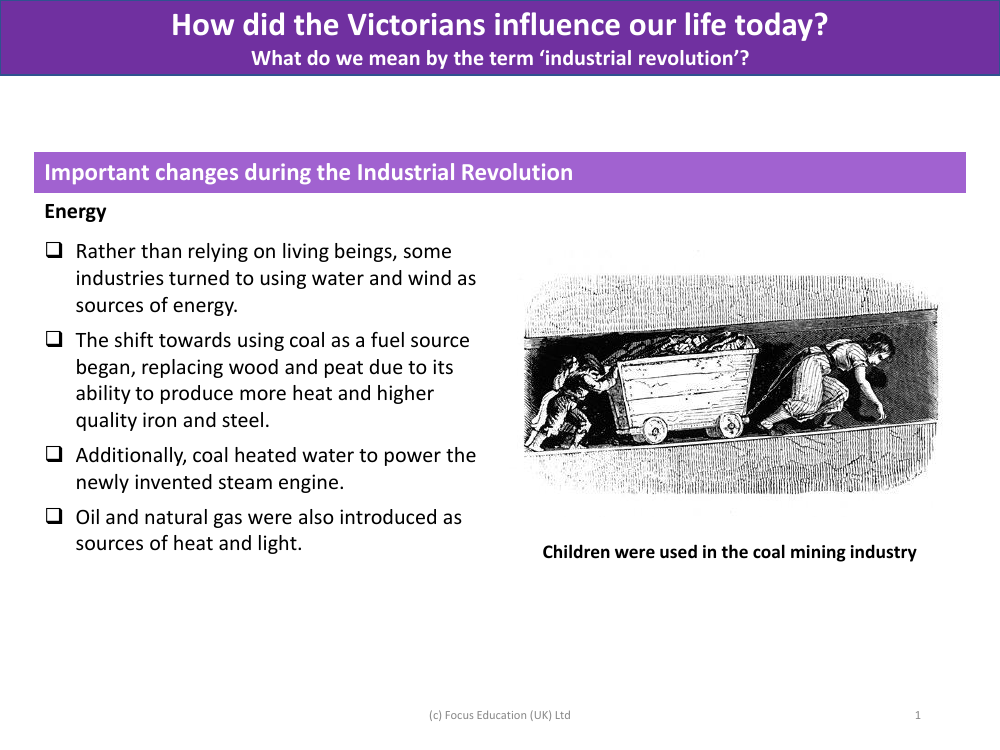Important changes during the Industrial Revolution - Info pack

History Resource Description
The Industrial Revolution brought about significant changes in energy sources, with industries shifting away from relying on manual labor and animals to harnessing the power of water and wind. The use of coal became prevalent as it produced more heat and facilitated the production of higher quality iron and steel, which was crucial for the era's advancements. Coal was also essential in heating water to power the revolutionary steam engine. Furthermore, oil and natural gas emerged as new sources of heat and light, while children were notably employed in the coal mining industry. These energy transformations laid the foundation for the technological and industrial innovations that followed.
Technological advancements during the Industrial Revolution were pivotal in shaping modern industry. Machines like the Spinning Jenny and the power loom revolutionized the textile industry, enabling mass production and efficiency far beyond what human hands could achieve. The steam engine played a central role in providing the energy required to run large factories, while the steam locomotive and the development of railways transformed transportation. This made travel faster and facilitated the movement of people, raw materials, and goods. The influence of the Victorians through these technological leaps continues to impact our lives today, raising questions about the profound effects of the Industrial Revolution on contemporary society.






